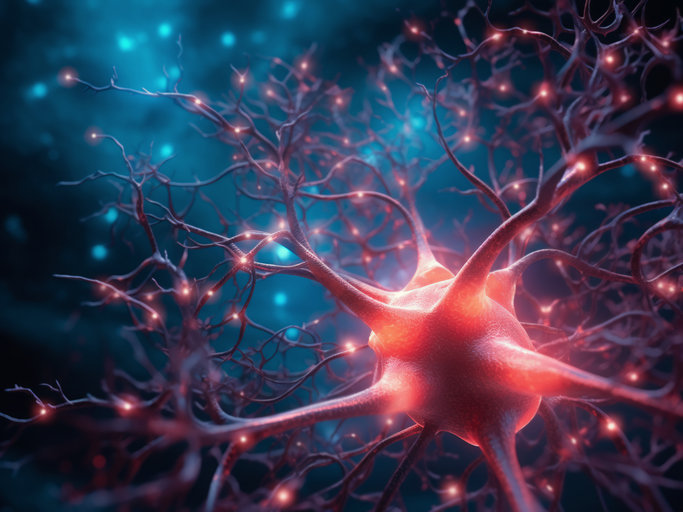Modafinil’s Impact on Neuroplasticity Explained: From Dopamine to Learning Potential
Modafinil is a wakefulness medicine that changes brain chemicals involved in attention and motivation. Researchers are also asking how it might shape neuroplasticity, which is the brain’s ability to adapt by strengthening or weakening connections between neurons. This article explains what is known, what is not, and how to use the evidence carefully in practice (U.S. Food and Drug Administration [FDA], 2015; Greenblatt & Adams, 2023; Puderbaugh & Emmady, 2023).
What is modafinil?
Modafinil is a central nervous system stimulant class medication used to improve wakefulness in adults with narcolepsy, obstructive sleep apnea, and shift work disorder. Typical adult dosing is 200 mg once daily, adjusted in liver disease and older adults. It carries warnings for serious rash, hypersensitivity, psychiatric symptoms, and drug interactions, and it is a Schedule IV controlled substance in the United States (FDA, 2015; Greenblatt & Adams, 2023).
Mechanistically, modafinil is a weak inhibitor of the dopamine transporter, which increases extracellular dopamine in brain regions important for attention and motivation. It may also influence norepinephrine, histamine, orexin, glutamate, and gamma aminobutyric acid systems to a smaller degree (Mereu et al., 2013; Greenblatt & Adams, 2023).
What is neuroplasticity?
Neuroplasticity is the brain’s ability to change with experience or injury. It includes synaptic plasticity, such as long term potentiation (LTP) and long term depression (LTD), and network level reorganization. Dopamine is one of several neuromodulators that can promote synaptic plasticity under the right conditions. Metaplasticity refers to how prior activity adjusts a synapse’s future ability to strengthen or weaken (Puderbaugh & Emmady, 2023; von Bernhardi et al., 2017).
How could modafinil affect neuroplasticity?
Dopamine and LTP
By inhibiting dopamine reuptake, modafinil raises dopamine in prefrontal cortex and hippocampus. Dopamine signaling can facilitate LTP and support working memory and goal directed behavior. Human and animal data show increased dopamine after modafinil, although the magnitude is modest compared with classic stimulants (Mereu et al., 2013). Synaptic plasticity depends on context, including dose, task demands, and baseline state, which is part of metaplasticity (Puderbaugh & Emmady, 2023; von Bernhardi et al., 2017).
Other transmitter systems
Evidence suggests indirect effects on norepinephrine and glutamate, and possible actions on orexin and histamine circuits that support wakefulness and attention. These systems can change the excitability of plasticity related networks, but they are likely secondary to dopamine effects in usual dosing ranges (Mereu et al., 2013; Greenblatt & Adams, 2023).
Region specific effects seen in animals
Findings are not uniform across brain areas. In a rat study with chronic dosing, modafinil improved long term memory in a hippocampus dependent maze, but impaired learning on a complex operant task that relies on prefrontal cortex. Electrophysiology showed reduced ability to induce LTP in prefrontal cortex after modafinil. This supports a view that modafinil may help some forms of memory while hindering plasticity linked to flexible sequencing and top down control in some conditions (Burgos et al., 2010).
What this means for readers
- Benefits may be stronger for vigilance and some memory tasks.
- Effects on executive functions that rely on prefrontal cortex may be neutral or negative in certain paradigms.
- Results are from animals, so translation to people is uncertain.
Developmental considerations
Developing brains are more sensitive to neuromodulator shifts. Prefrontal cortex plasticity matures into early adulthood. The animal study above used young adult rats and found prefrontal LTP impairment with chronic modafinil. Given pediatric rash risks and lack of approval in children, modafinil should not be used for cognitive enhancement in adolescents. In adults, hippocampal benefits seen in animals may or may not translate, and controlled human evidence remains limited (Burgos et al., 2010; FDA, 2015; Greenblatt & Adams, 2023).
What do human studies suggest about cognition?
Controlled human studies show improvements in vigilance, sustained attention, and some working memory measures, especially under sleep loss. Effects in well rested healthy adults are variable and task dependent. Mechanistic imaging shows dopamine transporter occupancy at clinical doses, yet abuse liability is lower than with methylphenidate, likely due to different kinetics and receptor interactions (Mereu et al., 2013). Evidence for durable gains in learning capacity through neuroplastic changes in healthy adults is not established.
Approved uses, off label uses, and ethics
The U.S. Food and Drug Administration approves modafinil for excessive sleepiness due to narcolepsy, obstructive sleep apnea, and shift work disorder. It is not approved for cognition or learning in healthy people. Off label use raises fairness and coercion concerns in school and work settings. Any discussion should separate short term alertness from claims about lasting neuroplastic change. Patients should be counseled about risks, including psychiatric events, serious rash, and interactions, and about the legal status of use (FDA, 2015; Greenblatt & Adams, 2023).
Safety, side effects, and interactions
Common side effects include headache, nausea, decreased appetite, anxiety, and insomnia. Serious risks include Stevens Johnson syndrome, toxic epidermal necrolysis, drug rash with eosinophilia and systemic symptoms, angioedema, psychiatric symptoms, and cardiovascular events. Modafinil induces cytochrome P450 3A4 and inhibits cytochrome P450 2C19, which can lower steroidal contraceptive effectiveness and raise levels of some medicines. Use caution with liver disease, older age, and pregnancy. Pediatric use is not approved (FDA, 2015; Greenblatt & Adams, 2023).
Practical guidance for readers
- Confirm the medical indication. For excessive sleepiness conditions, discuss benefits and risks with a clinician.
- Do not use for cognitive enhancement without medical supervision. Long term neuroplastic effects in healthy adults are unclear.
- Avoid combining with other stimulants. Monitor sleep, mood, and blood pressure.
- Use reliable contraception not dependent on ethinyl estradiol while on modafinil and for one month after stopping, due to enzyme induction (FDA, 2015).
Where the science needs to grow
- Prospective human studies that test region specific outcomes with imaging and electrophysiology.
- Dose response and duration studies that separate alertness effects from plasticity changes.
- Age specific trials that clarify risks in young adults while prefrontal systems are still maturing.
- Better models linking dopamine and glutamate modulation to metaplasticity and behavior over weeks to months (Mereu et al., 2013; von Bernhardi et al., 2017; Puderbaugh & Emmady, 2023).
FAQ
Can I take modafinil at night?
It is usually taken in the morning for narcolepsy or obstructive sleep apnea, or one hour before the start of a night shift for shift work disorder. Taking it late can cause insomnia. Follow your prescription timing (FDA, 2015).
Does modafinil improve memory in healthy people?
It can improve vigilance and some working memory tasks, especially when sleep deprived. Durable memory gains from neuroplastic changes in healthy, well rested adults are not proven, and results are mixed (Mereu et al., 2013).
Is modafinil safe for students or teenagers?
No. It is not approved for pediatric use. There is an increased risk of serious skin reactions in children. Do not use for studying without medical indication and oversight (FDA, 2015).
Does a higher dose improve learning more?
Higher doses do not consistently yield better cognitive effects and may increase side effects. The usual adult dose is 200 mg once daily, adjusted in special populations. Do not change your dose without medical advice (FDA, 2015; Greenblatt & Adams, 2023).
References
- U.S. Food and Drug Administration. (2015). PROVIGIL® (modafinil) tablets, for oral use, C-IV [Prescribing information]. U.S. Department of Health and Human Services. https://www.accessdata.fda.gov/drugsatfda_docs/label/2015/020717s037s038lbl.pdf
- Greenblatt, K., & Adams, N. (2023). Modafinil. In StatPearls [Internet]. StatPearls Publishing. https://www.ncbi.nlm.nih.gov/books/NBK531476/
- Puderbaugh, M., & Emmady, P. D. (2023). Neuroplasticity. In StatPearls [Internet]. StatPearls Publishing. https://www.ncbi.nlm.nih.gov/books/NBK557811/
- Burgos, H., Castillo, A., Flores, O., Puentes, G., Morgan, C., Gatica, A., Cofré, C., Hernández, A., Laurido, C., & Constandil, L. (2010). Effect of modafinil on learning performance and neocortical long-term potentiation in rats. Brain Research Bulletin, 83(5), 238–244. https://doi.org/10.1016/j.brainresbull.2010.08.010
- Mereu, M., Bonci, A., Newman, A. H., & Tanda, G. (2013). The neurobiology of modafinil as an enhancer of cognitive performance and a potential treatment for substance use disorders. Psychopharmacology, 229(3), 415–434. https://doi.org/10.1007/s00213-013-3232-4
- von Bernhardi, R., Eugenín-von Bernhardi, L., & Eugenín, J. (2017). What is neural plasticity? Advances in Experimental Medicine and Biology, 1015, 1–15. https://doi.org/10.1007/978-3-319-62817-2_1








